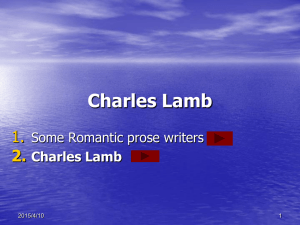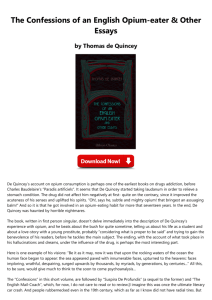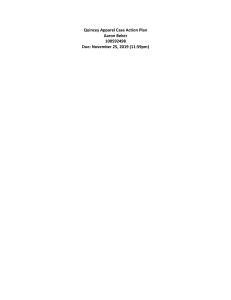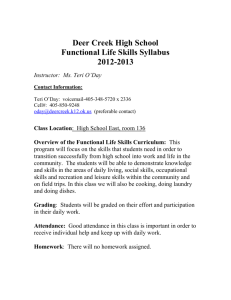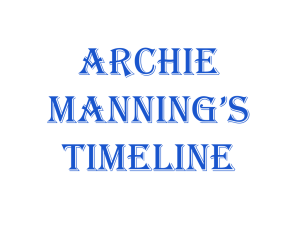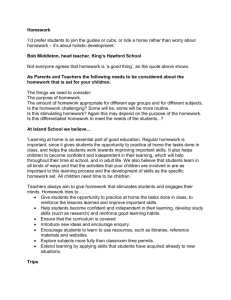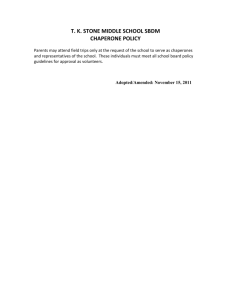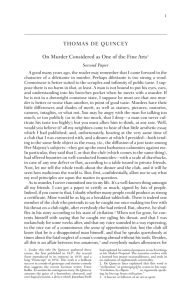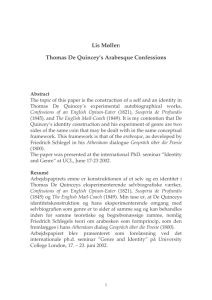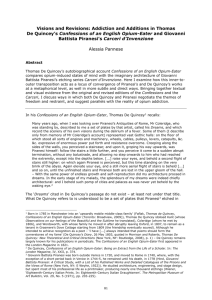Stephen Copley Research Award
advertisement
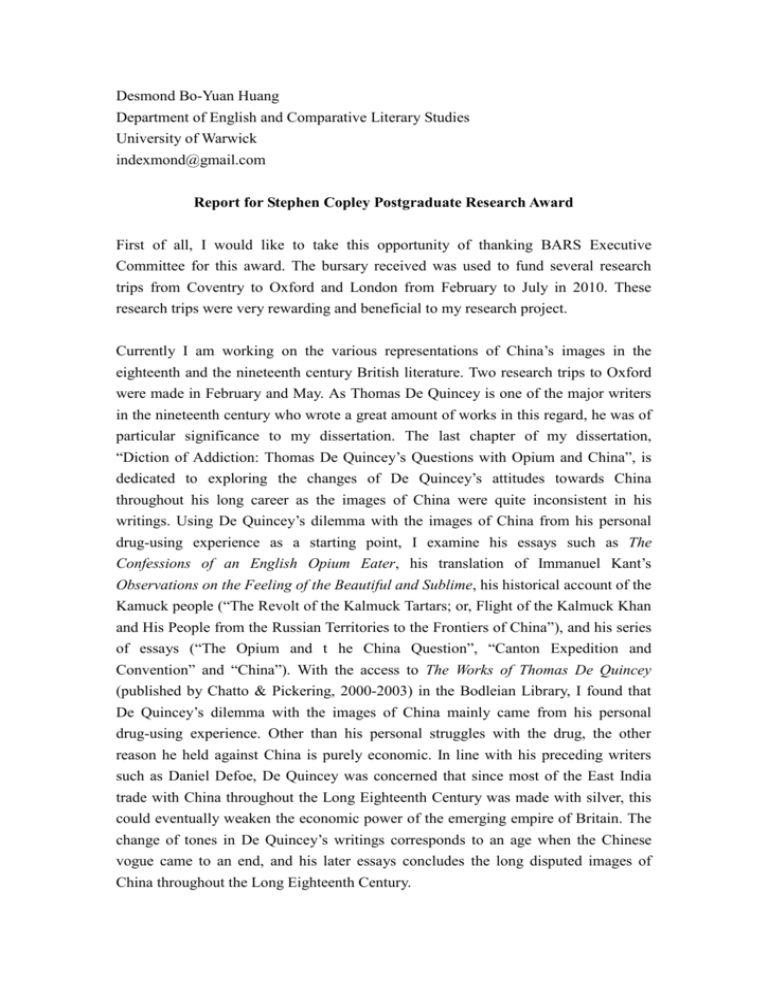
Desmond Bo-Yuan Huang Department of English and Comparative Literary Studies University of Warwick indexmond@gmail.com Report for Stephen Copley Postgraduate Research Award First of all, I would like to take this opportunity of thanking BARS Executive Committee for this award. The bursary received was used to fund several research trips from Coventry to Oxford and London from February to July in 2010. These research trips were very rewarding and beneficial to my research project. Currently I am working on the various representations of China’s images in the eighteenth and the nineteenth century British literature. Two research trips to Oxford were made in February and May. As Thomas De Quincey is one of the major writers in the nineteenth century who wrote a great amount of works in this regard, he was of particular significance to my dissertation. The last chapter of my dissertation, “Diction of Addiction: Thomas De Quincey’s Questions with Opium and China”, is dedicated to exploring the changes of De Quincey’s attitudes towards China throughout his long career as the images of China were quite inconsistent in his writings. Using De Quincey’s dilemma with the images of China from his personal drug-using experience as a starting point, I examine his essays such as The Confessions of an English Opium Eater, his translation of Immanuel Kant’s Observations on the Feeling of the Beautiful and Sublime, his historical account of the Kamuck people (“The Revolt of the Kalmuck Tartars; or, Flight of the Kalmuck Khan and His People from the Russian Territories to the Frontiers of China”), and his series of essays (“The Opium and t he China Question”, “Canton Expedition and Convention” and “China”). With the access to The Works of Thomas De Quincey (published by Chatto & Pickering, 2000-2003) in the Bodleian Library, I found that De Quincey’s dilemma with the images of China mainly came from his personal drug-using experience. Other than his personal struggles with the drug, the other reason he held against China is purely economic. In line with his preceding writers such as Daniel Defoe, De Quincey was concerned that since most of the East India trade with China throughout the Long Eighteenth Century was made with silver, this could eventually weaken the economic power of the emerging empire of Britain. The change of tones in De Quincey’s writings corresponds to an age when the Chinese vogue came to an end, and his later essays concludes the long disputed images of China throughout the Long Eighteenth Century. The funding also enabled me to make research trips to the British Library as well as the V&A Museum in London. One book of particular importance to my research was Charles Lamb’s correspondence with Thomas Manning (edited by G. A. Anderson, published in 1926), which I have used in the British Library two years ago when I worked on Charles Lamb. Thomas Manning was one of the most dedicated Sinologists at his time, and inspired Lamb to write “Dissertation upon Roast Pig”. And as an experienced traveller, Manning had travelled to Lhasa and stayed with young Dalai Lama for five months before joining the Amherst Embassy to China in 1816. I was hoping to find more of his narratives about China, but since the embassy was a failure, Manning was not able to contribute his expertise and did not leave anything about his trip to China. And more disappointingly, his letters to Lamb were rather uninformative about the places he visited. This ended up a bad attempt. I thus undertook two other trips to the V&A Museum to study William Alexander’s water-colour paintings. My previous research suggests that William Alexander, the draughtsman of the Macartney Embassy, could have been influenced by the aesthetics of Chinese paintings as he produced hundreds of sketches and paintings in China. The research trips to V&A helped me to examine more closely on the details of his paintings. William Alexander paid unofficial visits to local painters, Puqua and Chamfou, during his stay at Canton. My findings were that aesthetically Alexander could have subtly adapted the techniques by these local painters as he studied their art works, and in reality these local painters in Canton also copied from European prints and might have combined the Western aesthetics in their works. The mutual influences of aesthetics will be included in my conclusion chapter and in my future research project.
